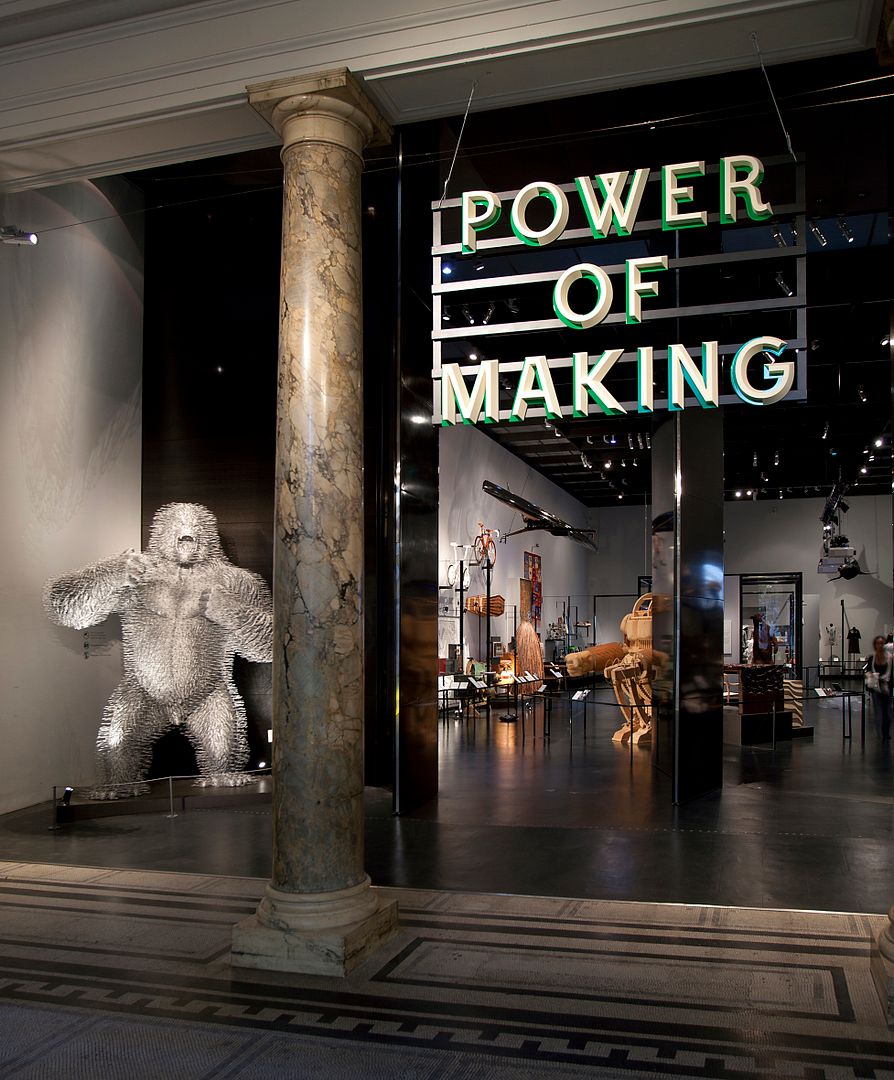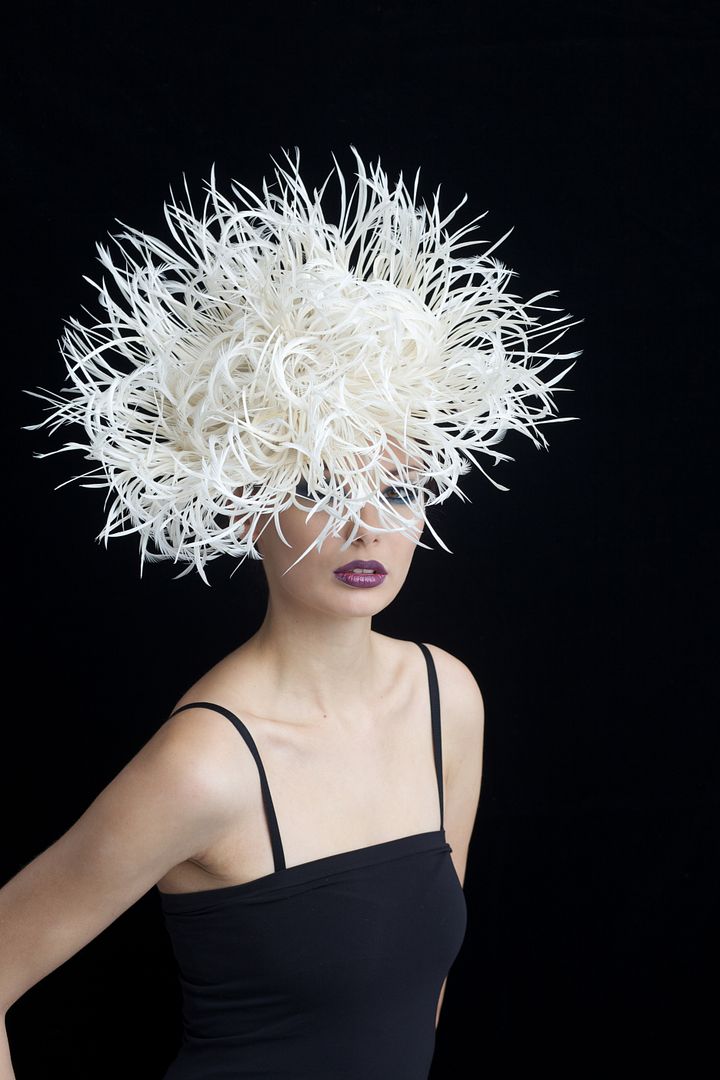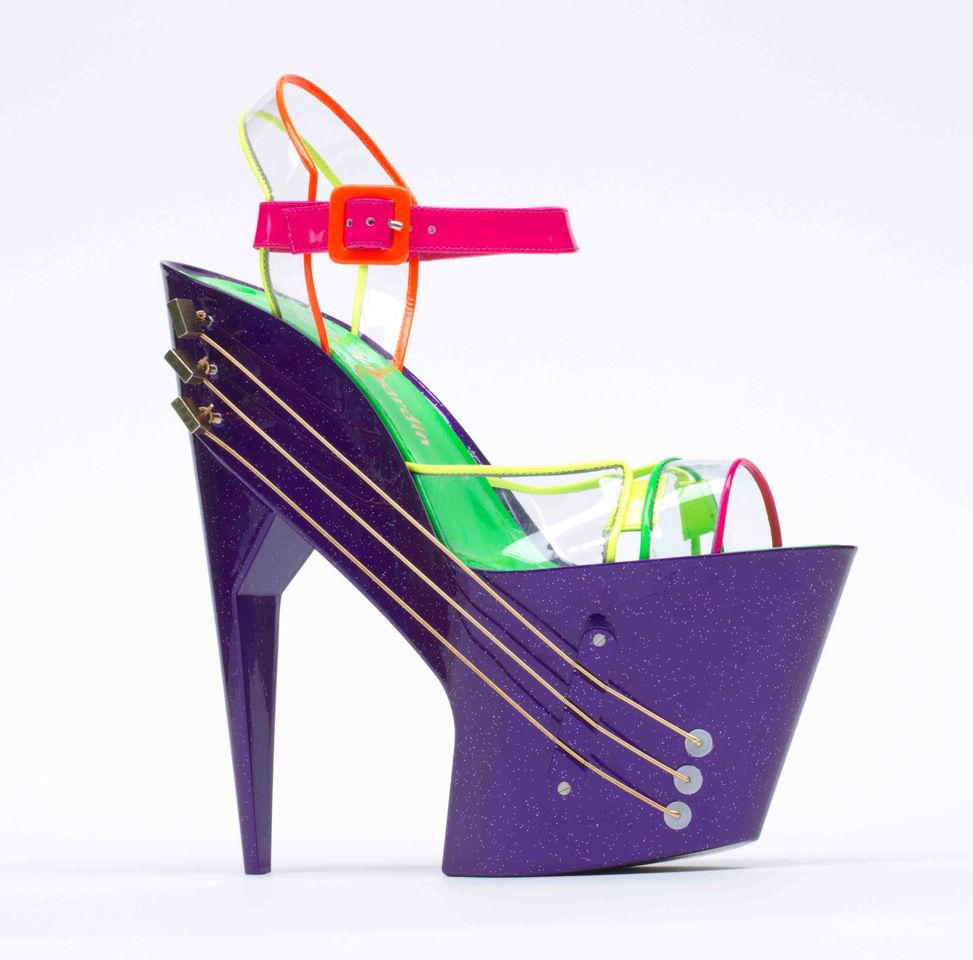
The entrance to 'The Power of Making, with David Mach’s King Silver on the left. © V&A images
Put on in conjunction with the British Crafts Counsel, the tagline for this exhibition is ‘How People Make Amazing Things’ and is about “the breadth and depth of craft’s presence in modern life. The featured objects have been selected to highlight both age-old skills and contemporary techniques… Each exhibit demonstrates refined craftsmanship, meticulous control or ingenious application.” Divided into five loose sections — Types of making, Learning a skill, In the zone, Making new knowledge and Thinking by making — the objects displayed in each are varied but share certain attributes. The labels for each object include not just the materials but also all of the techniques that went into their development and production, from wearable electronics engineering to weaving and mechatronics. Across the sections there are a variety of pieces that are in some way connected to textiles or fashion, either directly (a garment), through a technique, or through an included element. On the right side of the room there is a grouping of five pieces of clothing, including a Sandra Backlund navy short-sleeve hand-knitted dress (2008) whose sculptural form is derived from the human skeleton.

Knitted dress by Sandra Backlund. © John Scarisbrick.
Next to this are two traditional hats (2010) from James Lock & Co., a London firm who have been in business since 1676, as well as the Bio-Suit extra vehicular activity spacesuit ensemble (2002-11), designed by Professor Dava J. Newman at MIT using “sophisticated aerospace engineering, industrial design and patterning skills.” Proving that clothing and design are in a constant state of evolution — so much so that new materials and techniques are developed to suit the pace of change — this grouping also illustrates how broad the requirements and necessity of different types of dress is. Also on display are a few pieces by well-known, high-end ready-to-wear designers. Alexander McQueen’s iconic ‘Armadillo’ shoes (2009) are removed from their historical context and re-evaluated as a collaborative effort by over 100 people. The Fendi baguette, which kickstarted the ‘It Bag’ trend of the late 1990s and early 2000s, is resituated in between craft and mass-production through a limited edition needlework kit (2010) that includes a woven raffia bag, embroidery thread and needles for the creation of a completely personalized purse.

Anemone hat, designed by Sylvia Fletcher for James Lock & Co. © James Lock & co Ltd.
Of the greatest interest are the pieces that use textile techniques for innovative and novel ends, such as Peter Butcher’s beautiful embroidered surgical implants — the polyester suture thread is machine embroidered into complex, snowflake-like shapes that are implanted under the skin and which provide the surgeon with multiple attachment points for replacing lost tissue. Next to this implant is a ring by Nora Fok of hand-knit nylon monofilament in the shape of a cornflower. Both items are re-appropriating techniques for new ideas, a theme that many of the pieces on view have in common. The incorporation of new techniques into fashion can be seen in both the ‘Woolfiller’ repairing fibre and ‘Fabrican’ spray-on dress. ‘Woolfiller’, created by Dutch designer Heleen Klopper, repairs holes in wool garments by binding them with wool felt — this process can create completely new garments through the use of other colours with an almost patchwork effect. Manuel Torres developed ‘Fabrican’, a spray-on fabric made of cross-linked fibres that cling to each other, while a student at the Royal College of Art. Combining such disparate processes as chemical engineering, particle technology, design and spraying, Torres created a completely new product that has hundreds of possible applications. Some pieces on view are less useful but still illustrate the obsessive and passionate tendencies of an artisan completely immersed in their craft. Susie MacMurray’s ‘Widow’ dress is made of leather pierced by hand, over seven months, with 100,000 adamantine dressmaker pins. The porcupine-like garment is sharp and heavy, more sculpture than clothing.

'The Power of Making.' © V&A images
It is doubtful that an artist or designer could visit this exhibition without being inspired. Even the objects that seem to have little connection to fashion and textiles are displayed in such a manner — in a context of ‘anything goes’ — that it is impossible not to wonder how they could be incorporated with clothing production. How can portable, desktop 3D printers, such as the Up! Printer (Delta Micro Factory Corporation, 2010), be used in fashion? The Eggbot Robot–art Kit (Windell Oskay and Lenore Edman for Evil Mad Scientist Laboratories, 2010), a machine that allows you to paint on anything spherical, is open-source and specifically designed in order to be hacked. With products such as these readily available it seems inevitable that they will begin to be used in unexpected ways, which will likely lead to new fabrics and production techniques. With the inclusion of two films that delve deeper into the actual process of ‘making’, this exhibition provides a broad and successful look at the complex interplays of what that term means today.
